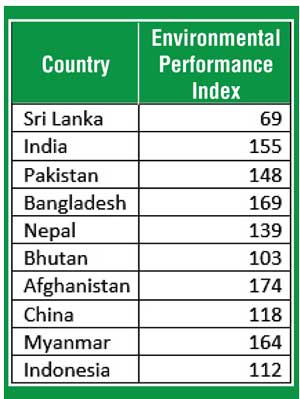Friday Dec 13, 2024
Friday Dec 13, 2024
Friday, 20 January 2017 00:00 - - {{hitsCtrl.values.hits}}
 220 million children breathe toxic air in South Asia. New vehicles are better for the environment than old ones but vehicular pollution will only end when all cars stop using fossil fuels or goes all electric. Until then, a stringent vehicle emission-testing regimen is necessary to prevent erosion of quality of air in Sri Lankan cities
220 million children breathe toxic air in South Asia. New vehicles are better for the environment than old ones but vehicular pollution will only end when all cars stop using fossil fuels or goes all electric. Until then, a stringent vehicle emission-testing regimen is necessary to prevent erosion of quality of air in Sri Lankan cities
Nearly 220 million children of South Asia breathe toxic air in the most polluted regions in the world including India, deepening worries over health of minors in several parts of the country, reported India’s Hindustan Times citing a report by UNICEF released in the third quarter of last year.
Happily, cities in Sri Lanka are excluded from this list. Experts attribute Sri Lanka’s low air pollution to the stringent vehicle emission testing program the island nation initiated in 2008 resulting in a higher quality of air compared to its South Asian neighbours.
Pollution is a very big and complex issue, and it affects South Asia more than other regions. The World Health Organisation (WHO), named India, China, Pakistan and Bangladesh as having cities where the air is so toxic, it kills. A 2015 study by the Max Planck Institute for Chemistry, found that in 2012 air pollution accounted for 3.3 million deaths worldwide. Out of these, 2.2 million were in South Asia.
“Undoubtedly, vehicle emissions are a major cause of air pollution and unlike factories and other industrial sites, vehicles emit pollutants in and around densely populated human habitations directly impacting those who live there,” said Surendra Perera Head of Operations of CleanCo Ltd., the management company operating ‘DriveGreen’ Vehicle Emission Testing Centres in Sri Lanka.
“In its 2014 environment performance index, Yale University ranked Sri Lanka highest in South Asia occupying 69th place in the world. Even Bhutan, up in the green Himalayan Mountains came in 34 places lower in 103rd place,” said Thilak Dilshan Epa, Technical Manager of DriveGreen.
A first-of-its-kind analysis based on satellite imagery, UNICEF’s ‘Clear the Air for Children’ report published end October 2016 stated that “Around 300 million children currently live in areas where the air is toxic – exceeding international limits by at least six times”. (https://www.unicef.org/media/media_92979.html)
In total, around two billion children live in areas that exceed the World Health Organisation’s annual limit, the report said further.
According to UNICEF, the factors responsible for outdoor air pollution include vehicle emissions, heavy use of fossil fuels, dust and burning of waste.
Air pollution is linked not only to diseases that kill, but also with poor health and morbidity among millions more children. It causes breathing difficulties and studies show it is linked with asthma, bronchitis, airways inflammation and even eye irritation.